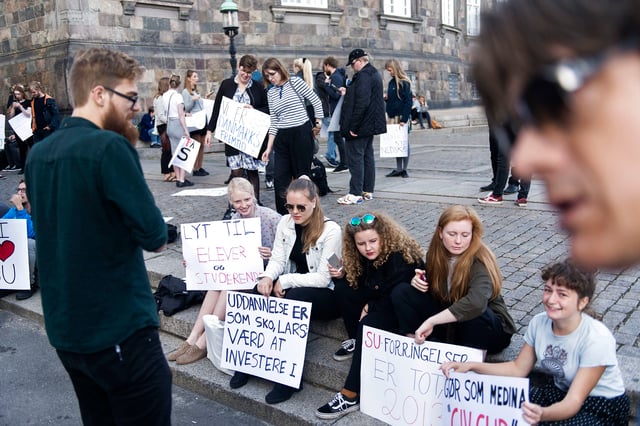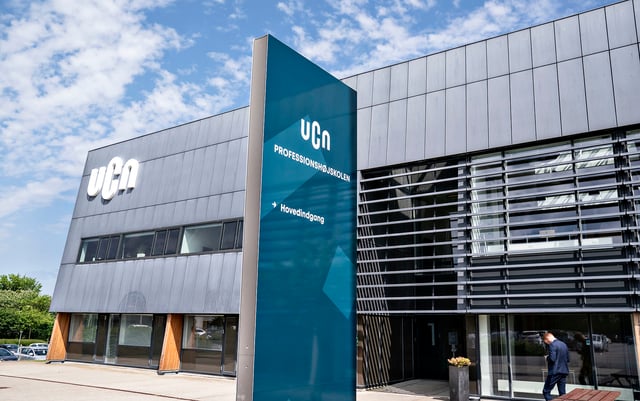The protesters marched across Paris to the famous Pantheon monument to vent their anger about the crumbling state of French universities, job insecurity, and low quality teaching.
Sporting banners, chanting slogans, and setting off firecrackers, the participants made it crystal clear what they thought of the current state of the higher education system in France.
“It’s no surprise 50 percent of people in their first year of university fail their courses and unemployment among graduates is up 33 percent,” Matthieu Bauhain from the Communist student’s union (Union des Étudiants Communistes) told The Local. “Our facilities are in a terrible state, certain rooms don’t have heating during the winter months and there aren’t enough lecturers. We’re here to show our anger about this.”
On the Tumblr account “Universities in ruin”, students have uploaded pictures that back Bauhain’s words, showing everything from dead cockroaches in university bathrooms to leaking ceilings in canteens.

But it’s not just the buildings that are in real need of a revamp, the lack of investment is also having consequences on the quality of the teaching.
“They are narrowing down education programmes,” said Julia Le Noé, who is studying environmental sciences at the Pierre and Marie Curie University in Paris. “Positions are being eliminated, which in turn lowers the quality of teaching. You don’t get to interact as much with your lecturer because there are too many students.”
Stéphanie, a researcher in sociology at the University of Rouen who didn’t want to give her last name, says the lack of staff in French academia is another issue the protesters want addressed.
“We need to recruit more people,” she said. “France has such a high unemployment rate yet there aren’t enough lecturers and researchers at universities.”
If mediocre infrastructure and low quality teaching aren’t enough to deter young people from pursuing a teaching career in higher education, then subsequent dire job prospects could be the nail in the coffin.
“We are protesting against the lack of job security in academia,” said Charlotte Leduc, one of the demonstrators. “Even with a Ph.D. it’s not guaranteed you will find employment.”
She went on to explain that after obtaining their diplomas researchers often only land short-term contracts limited to a few years.
“This causes the quality of the research to suffer because there isn’t enough time to be thorough and see things through to the end,” she said.

Philippe Sindzingre, a lecturer at the Pierre and Marie Curie University, agrees that in order to do successful research the prospects for young people need to improve.
“We need people that have confidence in their future,” he said. “They need to know that they’ll still be doing well even in ten or 15 years.”
The protesters' efforts seem to have had some initial success with President Hollande expected to announce later on Friday that a proposed cut of €70 million to the higher education budget will be shelved.
According to Guillaume Bossis, a researcher at the National Centre of Scientific Research (CNRS), this move isn’t enough.
“It doesn’t even come close to the previous situation since it’s not €70 million that are threatened but €136 million,” he told newspaper Le Figaro. “We’re far from the €2 billion needed to properly operate research in France.”
The discontent among those involved in academia in France is reflected in the global reputation of French universities which continue to tumble according to annual rankings.
Speaking to The Local earlier this year Chris Parr from the Times Higher Education magazine said: “It's worrying. For a country with a great reputation in so many sectors this should sound alarm bells.”
by Simone Flückiger






 Please whitelist us to continue reading.
Please whitelist us to continue reading.
Member comments